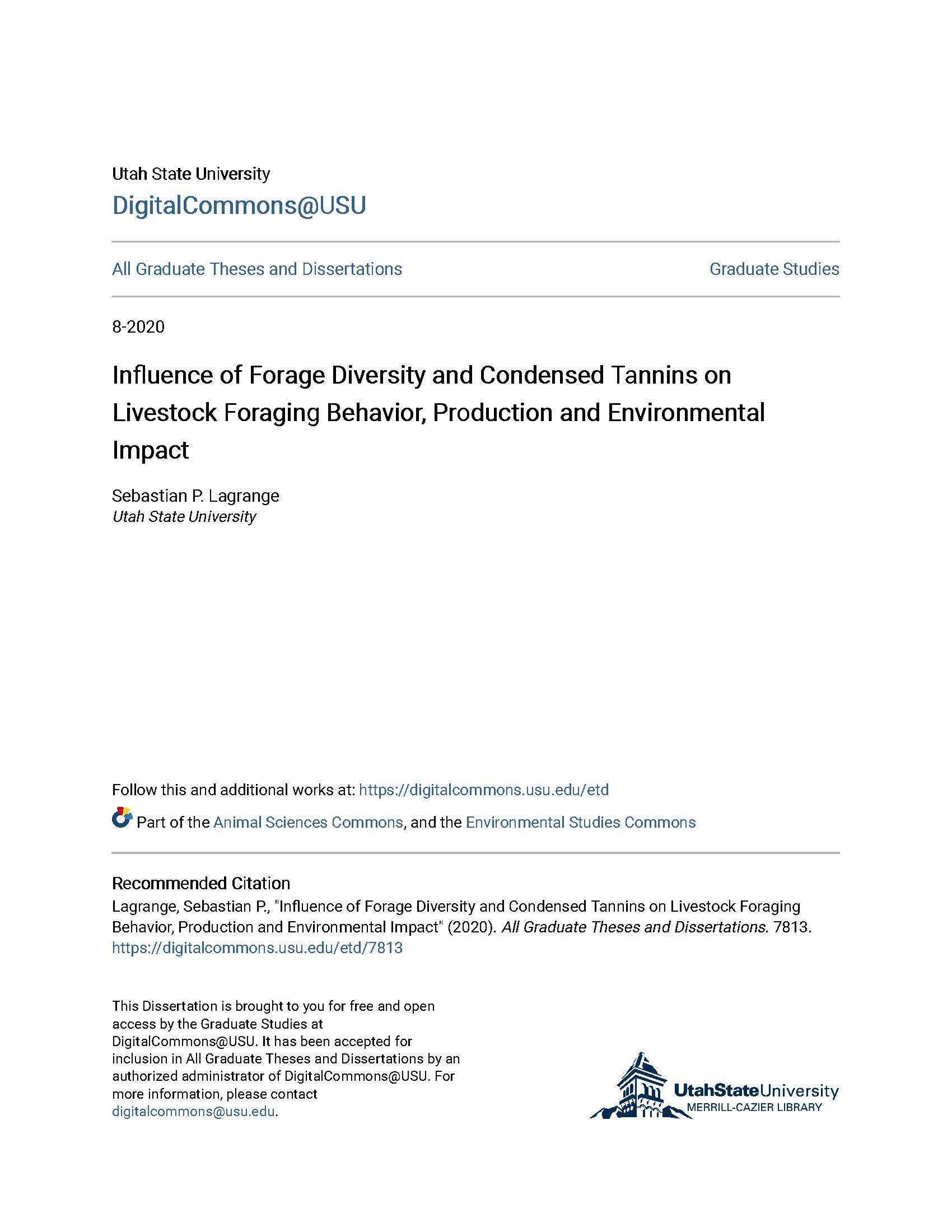Ver ítem
- xmlui.general.dspace_homeCentros Regionales y EEAsCentro Regional Buenos Aires SurEEA BordenaveTesisxmlui.ArtifactBrowser.ItemViewer.trail
Influence of Forage Diversity and Condensed Tannins on Livestock Foraging Behavior, Production and Environmental Impact
Resumen
Eating a combination of forages with different chemistries (i.e., nutrients, beneficial compounds such as tannins) may enhance ruminant nutrition and reduce environmental impacts relative to eating single forages. I explored the influence of offering sheep and cattle all possible combinations of tanniferous (i.e., plants with tannins; birdsfoot trefoil, sainfoin) and non-tanniferous legumes (i.e., plants without tannins; alfalfa) or their monocultures on
[ver mas...]
Eating a combination of forages with different chemistries (i.e., nutrients, beneficial compounds such as tannins) may enhance ruminant nutrition and reduce environmental impacts relative to eating single forages. I explored the influence of offering sheep and cattle all possible combinations of tanniferous (i.e., plants with tannins; birdsfoot trefoil, sainfoin) and non-tanniferous legumes (i.e., plants without tannins; alfalfa) or their monocultures on animal performance, behavior, and methane and nitrogen (N) emissions. Offering choices among these legumes to penned sheep improved intake and diet digestibility relative to feeding monocultures. Mixtures selected by sheep were better digested than mixtures containing equal parts of the forages (indifferent selection), and similar to the legume of greatest digestion rate (alfalfa). In both sheep and cattle, tanniferous forages shifted the site of N excretion from urine to feces, which reduces environmental impacts, as fecal N is in the form of organic N and is metabolized at a slower rate than N in urine. Heifers grazing choices between tanniferous legumes showed the greatest decline in urinary N concentration, suggesting compounded effects that enhance N economy in grazing ruminants and reduce urinary N excretion to the environment. Enteric methane emissions were not affected by treatment, but heifers offered choices among all three legumes showed the greatest body weight gains, implying reductions in the number of days to slaughter, which reduces methane emissions during the finishing process. Grazing behavior and stress levels in heifers offered choices among strips of the three legumes were similar to animals grazing monocultures. Thus, my results suggest that grazing forage combinations increased animal productivity and reduced environmental impacts without affecting behavior or stress levels relative to grazing single forages, all benefits that lead to more sustainable pasture-based finishing systems.
[Cerrar]

Director de Tesis
Villalba, Juan J.;
Descripción
Tesis para obtener el grado de Doctor of Philosophy (PhD), de la Utah State University, en agosto de 2020
Fecha
2020-08
Editorial
Utah State University
Formato
pdf
Tipo de documento
tesis doctoral
Palabras Claves
Derechos de acceso
Abierto
 Excepto donde se diga explicitamente, este item se publica bajo la siguiente descripción: Creative Commons Attribution-NonCommercial-ShareAlike 2.5 Unported (CC BY-NC-SA 2.5)
Excepto donde se diga explicitamente, este item se publica bajo la siguiente descripción: Creative Commons Attribution-NonCommercial-ShareAlike 2.5 Unported (CC BY-NC-SA 2.5)


